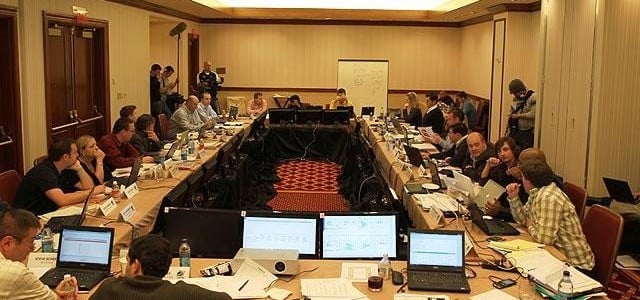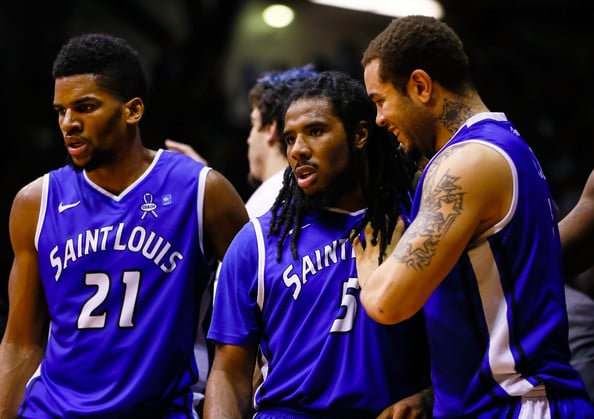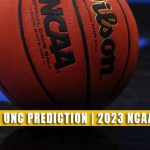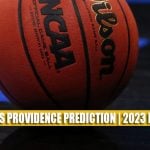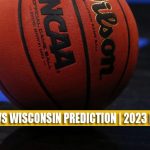We know where the NCAA Tournament games are going to be played, and when. We know that Selection Sunday is this Sunday, and will reveal the 68-team field that we will collectively sweat over for three days making our March Madness picks.
But how does the Selection Committee work? Why do some teams end up a six-seed, and others a 10, while playing in the same conference? The process is layered, complex and, well, mad. With that in mind, we set out to demystify the process for us regular Joes who just want to understand how this bracket gets made.
How Selection Sunday Works
[sc:NCAAB240banner ]There are 351 schools in Division I basketball, divided into 32 conferences. The champion of each conference (decided via the conference tournament except in the Ivy League) automatically books a spot in the Big Dance. That means the committee is left to deliberate which schools will make up these 36 “at-large” bids.
The following are the main factors considered by the committee in the selection process.
Conference Record
Having a strong record in a major conference (ACC, Big 12, or SEC, etc.) gives a team a tremendous boost in the bracket formation. For mid-major conferences (like the West Coast conference, who typically only have one or two contenders), a team’s dominant conference record may not stand for much, because their competition is softer. Case in point: the Saint Louis Billikens. The Billikens have the best Atlantic 10 record but could end up with only a No. 5 seed.
In a stronger conference like the Big Ten, a less dominant conference record might actually have you in higher standing than if you win out in a mid-major, thanks to the fact you are playing some of the nation’s best teams on a weekly basis.
Performance Against Ranked Teams
Beating ranked teams is one of the easiest ways to catch the eye of the committee, especially if you’re a mid-major program. Take for example Southern Methodist, which is likely to make its first tournament appearance since 1993. The Mustangs have four wins against top 25 teams and figure to receive a tournament seed in the 9-12 range, despite having lost eight times this season.
RPI
The RPI or The Ratings Percentage Index is a figure that is used by the committee to help them rank each of the 68 teams. In a sense, it is also the ultimate arbitrator for teams vying for at-large berths. The RPI formula takes into account the following: number of wins by a team (WP), number of wins by its opponents (OWP), and the number of wins by its opponents’ opponents (OOWP), which is summed up in this equation:
(WP * 0.25) + (OWP * 0.50) + (OOWP * 0.25)
If you’re as uncomfortable with formulas as we are, here’s what that jumble of letters and numbers means: wins are worth more if they came against teams who have also won. This means that the teams that have caught the previously-undefeated Syracuse Orange in one of their four losses in the last month have grabbed nice juicy bumps in their RPI.
The First Four
Once the committee comes up with the 68 teams and their respective seeds, it will group them into four regions composed of 16 teams each, for a total of 64 teams. The additional four teams will compete in the “First Four” round. In this round, the lowest four at-large schools and lowest-ranked conference champions will be pitted against one another, with the winners taking the seeding that the committee determines is most accurate for any of the teams contesting the spot. For example, in 2012, BYU and Iona played for a No. 14 slot.
Regions & Venues
The 68 teams are then organized into the four regions of the bracket. Teams strictly do not play on their home court (a neutral court is considered anywhere a team played less than three times in a season), but at the committee makes an effort to place teams geographically near their fan bases. The higher a team is ranked, the more likely they are to play in the venue closest to their school. This year, for example, No. 1-ranked Florida is a lock to play in Orlando for their first two games of the tournament.
Have you picked your March Madness winner yet? Check out our college basketball futures and pick your champion at Top Bet’s sportsbook.
[sc:NCAAB490Banner ]2,796 total views, 1 views today

